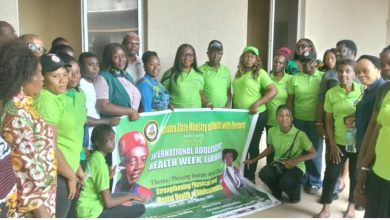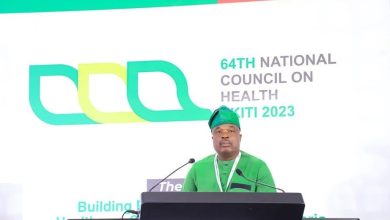Nigeria Records Decline in Birth Rate as Fertility Drops to 4.8 Children per Woman
Nigeria’s fertility rate has fallen from 5.3 to 4.8 births per woman in six years.
The 2024 NDHS report links the drop to improved access to family planning services nationwide.
Nigeria’s Total Fertility Rate (TFR) has dropped from 5.3 children per woman in 2018 to 4.8 in 2024, marking a notable demographic transition over the past five years, according to the 2024 Nigeria Demographic and Health Survey (NDHS) Report.

Minister of State for Health and Social Welfare, Dr. Iziaq Salako, disclosed the findings, linking the decline to growing access to and adoption of family planning services across the country.
He noted that the rate of modern contraceptive use among married women increased slightly from 12 percent in 2018 to 15 percent in 2023, while the proportion of women with satisfied family planning needs rose to 37 percent. Despite these gains, Dr. Salako said the current levels remain below what is required to drive significant socio-economic growth.
The NDHS report also recorded progress in key areas of maternal and child health. Under-five mortality dropped from 132 deaths per 1,000 live births in 2018 to 110 per 1,000 in 2024. Coverage of essential health services improved, with antenatal attendance at 63 percent, skilled birth attendance at 46 percent, and postnatal care within two days of delivery increasing from 38 percent in 2018 to 42 percent in 2024.
However, the report showed that neonatal mortality has remained nearly unchanged, rising slightly from 39 to 41 deaths per 1,000 live births. Dr. Salako said this stagnation calls for urgent interventions, as newborn deaths now account for about 40 to 45 percent of all child mortality cases.
He added that the Ministry is addressing the identified gaps through initiatives such as the Maternal and Maternal Fatality Reduction Initiative and the Nigerian Child Survivor Act (2023–2025). These programs aim to improve health investments, strengthen coordination, and enhance community participation to reduce preventable deaths.
Executive Chairman of the National Population Commission (NPC), Hon. Nasir Kwarra, whose agency conducted the survey, described the NDHS as an essential tool for monitoring population dynamics and national health performance. He said the 2024 edition provides crucial insights for shaping evidence-based policies at a time when reliable data is most needed.
Kwarra added that the successful completion of the survey demonstrates that “data is not just a technical product but a public asset that strengthens accountable governance.”
The 2024 NDHS, the sixth in the series since 1999, covered about 42,000 households nationwide during its fieldwork conducted between December 1, 2023, and May 5, 2024.



